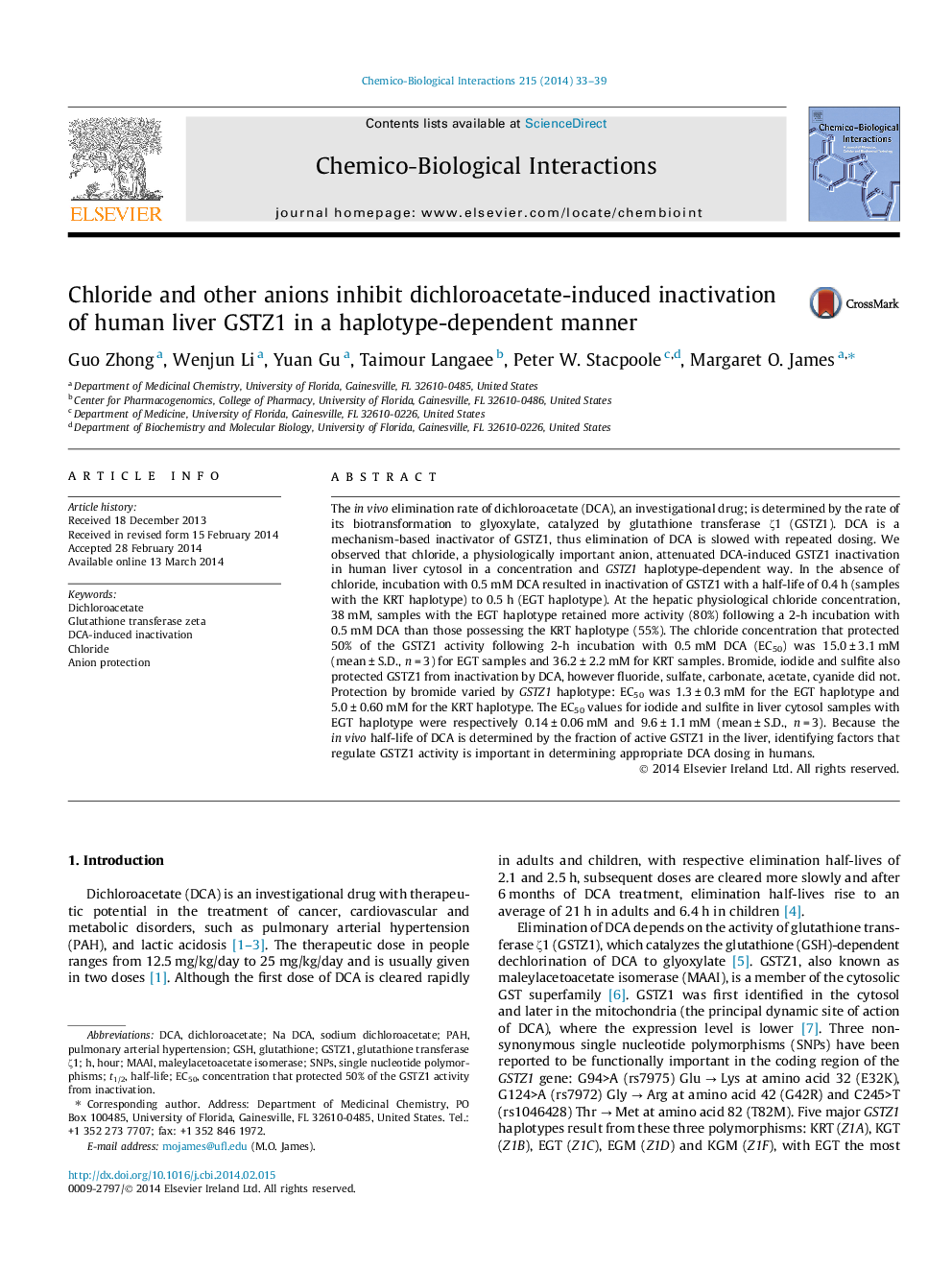| Article ID | Journal | Published Year | Pages | File Type |
|---|---|---|---|---|
| 2580481 | Chemico-Biological Interactions | 2014 | 7 Pages |
•Inactivation of GSTZ1 by dichloroacetate (DCA) controls DCA pharmacokinetics.•This work reports factors affecting mechanism-based inactivation of GSTZ1-1 by DCA.•The physiologically important nucleophile, Cl− protected GSTZ1 from inactivation by DCA.•A lower concentration of Cl− was required to protect GSTZ1C than GSTZ1A.•Br−, I− and SO32− protected GSTZ1, but F−, SO42−, CO32−, CN− and CH3COO− did not.
The in vivo elimination rate of dichloroacetate (DCA), an investigational drug; is determined by the rate of its biotransformation to glyoxylate, catalyzed by glutathione transferase ζ1 (GSTZ1). DCA is a mechanism-based inactivator of GSTZ1, thus elimination of DCA is slowed with repeated dosing. We observed that chloride, a physiologically important anion, attenuated DCA-induced GSTZ1 inactivation in human liver cytosol in a concentration and GSTZ1 haplotype-dependent way. In the absence of chloride, incubation with 0.5 mM DCA resulted in inactivation of GSTZ1 with a half-life of 0.4 h (samples with the KRT haplotype) to 0.5 h (EGT haplotype). At the hepatic physiological chloride concentration, 38 mM, samples with the EGT haplotype retained more activity (80%) following a 2-h incubation with 0.5 mM DCA than those possessing the KRT haplotype (55%). The chloride concentration that protected 50% of the GSTZ1 activity following 2-h incubation with 0.5 mM DCA (EC50) was 15.0 ± 3.1 mM (mean ± S.D., n = 3) for EGT samples and 36.2 ± 2.2 mM for KRT samples. Bromide, iodide and sulfite also protected GSTZ1 from inactivation by DCA, however fluoride, sulfate, carbonate, acetate, cyanide did not. Protection by bromide varied by GSTZ1 haplotype: EC50 was 1.3 ± 0.3 mM for the EGT haplotype and 5.0 ± 0.60 mM for the KRT haplotype. The EC50 values for iodide and sulfite in liver cytosol samples with EGT haplotype were respectively 0.14 ± 0.06 mM and 9.6 ± 1.1 mM (mean ± S.D., n = 3). Because the in vivo half-life of DCA is determined by the fraction of active GSTZ1 in the liver, identifying factors that regulate GSTZ1 activity is important in determining appropriate DCA dosing in humans.
Graphical abstractFigure optionsDownload full-size imageDownload as PowerPoint slide
